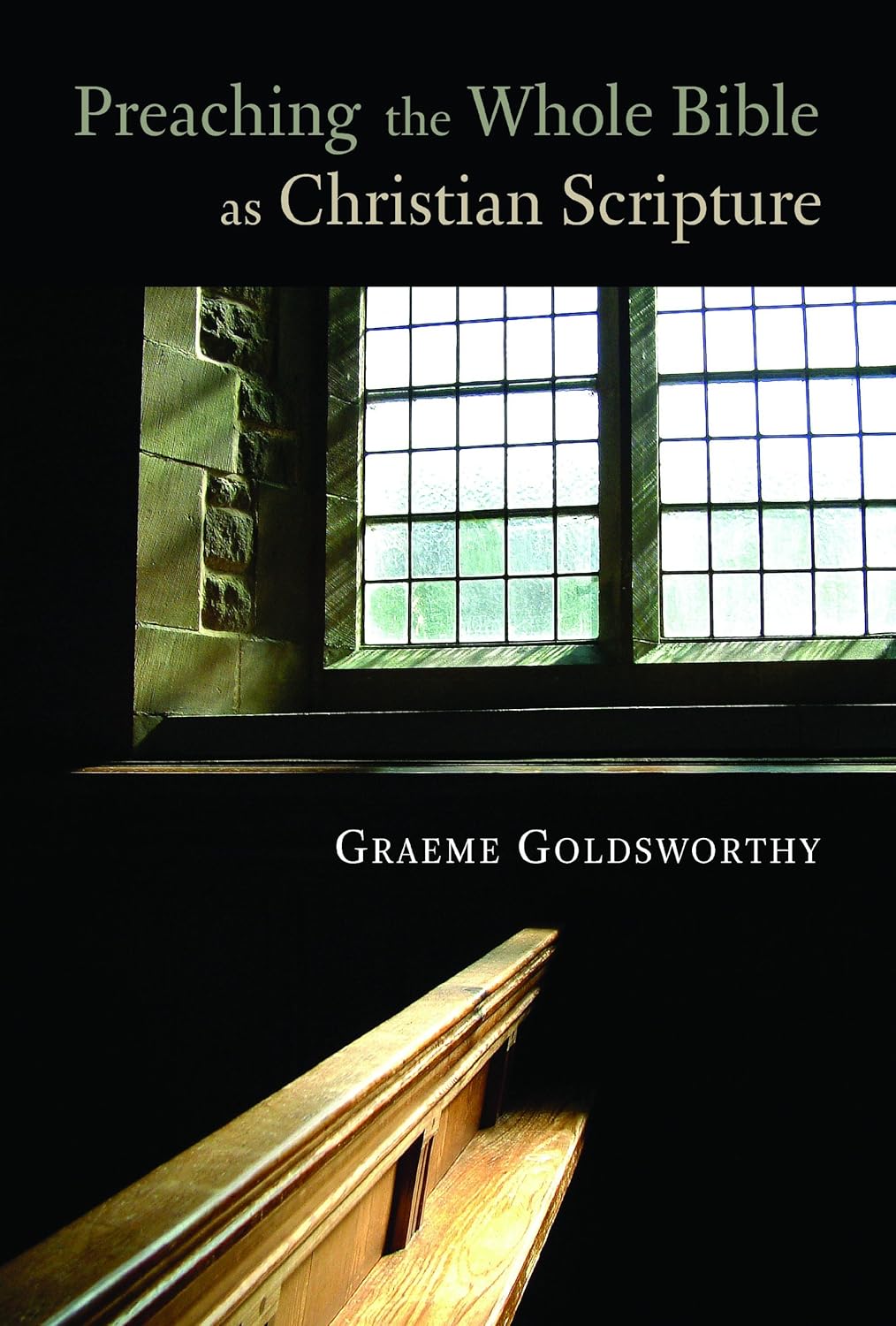Before becoming a father, I didn’t understand how much it takes to engage with children. My 3-year-old daughter, Nayah, has taught me valuable lessons in this area. Recently, I’ve enjoyed working on puzzles with her. Our goal is to combine the puzzle pieces to form a complete picture. Watching Nayah’s excitement as the puzzle comes together is very rewarding. However, putting the pieces together requires more patience and attention than she is often willing to give. This reminds me of my earlier days in Christian ministry and sermon writing, before being exposed to biblical theology.
Like Nayah with her puzzles, I often avoided the effort required to fully prepare sermons and seek Christ within them. As a result, many of my old sermons lacked depth and were regrettably only half-cooked, like scattered puzzle pieces that never formed a clear picture.
I avoided the effort required to fully prepare sermons and seek Christ.
I often reflect on the sermons I preached before exposure to biblical theology. At that time, I struggled to make sense of difficult passages in the Old Testament. I sought to help my fellow Christians understand why certain practices—like cooking pork and eating it—are now permissible; or why we don’t strictly observe the Sabbath. But I couldn’t. I struggled to explain these concepts clearly or address the complex issues outlined in Exodus 23:18 and Deuteronomy 33:22. Regrettably, many sermons became a moralistic muddle. Without a comprehensive understanding of biblical theology, I was lost, meaning my hearers often were, too.
Incomplete Christian Sermons
Very simply, biblical theology helps one to view the Bible as a cohesive whole. Instead of treating God’s word as a collection of verses to be picked from, biblical theology highlights the story God is telling, starting in Genesis and finishing with Revelation.
Biblical theology allows the Bible to speak in its entirety.
Like so many other preachers back then, I often found the verse supporting my point without paying attention to its context. This could be likened to my daughter trying to build a puzzle with only one piece. Yes, each piece is necessary in its own right, but not apart from the rest. No single puzzle piece can help you grasp the entire picture. You need to figure out how they fit together and are arranged.

Preaching the Whole Bible as Christian Scripture
Graeme Goldsworthy
Preaching the Whole Bible as Christian Scripture
Graeme Goldsworthy
While strong, gospel-centered preaching abounds, many Christian pastors and lay preachers find it difficult to preach meaningfully from the Old Testament. This practical handbook offers help. Graeme Goldsworthy teaches the basics of preaching the whole Bible in a consistently Christ-centered way. Goldsworthy first examines the Bible, biblical theology, and preaching and shows how they relate in the preparation of Christ-centered sermons. He then applies the biblical-theological method to the various types of literature found in the Bible, drawing out their contributions to expository preaching focused on the person and work of Christ. Clear, complete, and immediately applicable, this volume will become a fundamental text for teachers, pastors, and students preparing for ministry.
Thus, I regret the sermons I delivered before I understood biblical theology. It wasn’t until I read According to Plan and Preaching the Whole Bible as Christian Scripture that I recognised the significance of this approach in addressing the challenges I faced. To this day, I’m grateful to God for Graeme Goldsworthy, the author of those insightful titles. In this review, I will focus on the latter, developing how biblical theology allows the Bible to speak in its entirety—as the word of the one God about the one path to salvation.
The Whole Bible Preaches Christ
In Preaching the Whole Bible as Christian Scripture, Goldsworthy thoroughly explains various issues in biblical theology and how they align with expository preaching. He divides his work into two parts. The first part outlines his methodology for biblical theology. It demonstrates how it relates to expository preaching that produces Christ-centred sermons. The second part applies this methodology to different genres of biblical literature. Consequently, the book serves as a manual for preachers, guiding them in using a consistently Christ-centred approach to their sermons. I highly recommend this book to all my fellow preachers.
In this review, I will focus on the book’s first part because I believe this is where most preachers need to pay serious attention. Goldsworthy corrected three common mistakes that I made before being exposed to biblical theology.
Three Mistakes Goldsworthy Corrected
1. Missing the Whole for the Parts
Goldsworthy expresses deep regret over how many preachers overlook the unity of the Bible. This resonates with me. I feel a similar sadness when I see my daughter struggle to understand how puzzle pieces fit together to form one picture. It also pains me to witness preachers focusing on a single verse while neglecting the broader scriptural context, which provides essential insights. The Bible is a unified story. Only by allowing the Bible to tell its own story can we appreciate the coherent meaning of the whole. This requires us to recognise the Bible’s remarkable complexity and unity, from creation through the fall and redemption to consummation. Faithful preaching should consistently direct people to this larger perspective and background.
This book is a guide to the various parts of the Bible.
Understanding the Bible as a single story is challenging. It demands diligence and hard work, but it’s worth the effort. I often remind Nayah that while each puzzle piece is helpful, it is inadequate for seeing the whole puzzle. In the same way, Goldsworthy illustrates that having all the pieces isn’t enough. We must know how they fit together. His book is a guide to the various parts of the Bible.
2. Directly Applying the Old Testament Law
The second mistake Goldsworthy helped me see was that I was directly applying the law to Zimbabweans without putting Christ into the picture. Linked with this, he also addresses some common misunderstandings concerning the law and grace.
As we’ve seen, the entire Bible presents a complete picture. In the Old Testament, the law given to Moses is not his final word. Over centuries, God added more information, both law and promises, through figures such as David and the writing prophets. All of this finds its fulfilment and culmination in Jesus’ arrival. In light of him, everything fits together beautifully.
3. Marginalising Christ
Finally, and very much linked with the previous point, I didn’t treat or see Christ as the centre of scripture. But by unpacking Old Testament typology, Goldsworthy demonstrates how Christ is central (John 5:39; Luke 24:13-27). He writes, “I know how it will not always be a simple matter to show how every text in the Bible speaks of Christ, but that does not alter the fact that he says it does” (p21). Understanding Jesus, we can see how each piece fits into the larger narrative. Unfortunately, many people take shortcuts in this process and miss Christ, the bolt that holds it all together.
Why would you consider delivering a Christian sermon without referencing Jesus?
Goldsworthy provocatively asks: Why would you consider delivering a Christian sermon without referencing Jesus? Is there any other place we can turn to find God? Where can we see true humanity or discover meaning in anything in creation? The Bible’s answer is clear: there is nowhere but Jesus. Thus, when preparing a sermon, we should ask ourselves: Where is Christ in this text? If you haven’t seen Christ in the text, pause and return later, for you will find him. All Scripture is about him and fulfilled in him (Luke 24:27).
Failing to read all scripture through the lens of Christ poses great dangers. Goldsworthy goes as far as calling such an oversight demonic (p124), leading hearers to suffer from spiritual malnutrition and indigestion. Preaching from the Old Testament without referencing Christ’s work on the cross is akin to serving half-cooked food. People must hear about their sinful state and desperate need for Jesus.
Two Final Words About Christian Sermons
Let me conclude with two final warnings for those who stand in the pulpit or desire to teach God’s word. Firstly, since God’s word is supreme in matters of faith, we should approach it humbly and with reverence (Isaiah 66:2b). Pray for God to open your eyes, ears, and hearts by his Spirit, helping you to see Christ and be convicted as you listen.
Neglecting biblical theology puts both ourselves and our listeners at risk of losing the way.
Secondly, take God’s word seriously. Don’t forget the warning from Jesus’ brother. “Not many of you should become teachers, my fellow believers, because you know that we who teach will be judged more strictly” (James 3:1). On this theme, Goldsworthy writes, “If we are not going to proclaim some aspect of the riches of Christ in every sermon, we should not be in the pulpit” (p126). Neglecting biblical theology puts both ourselves and our listeners at risk of losing the way, leading to unbiblical applications. “Scripture interprets itself” (p128).
We must devote time and effort to putting the puzzle pieces together. It’s hard work but always worth it.














